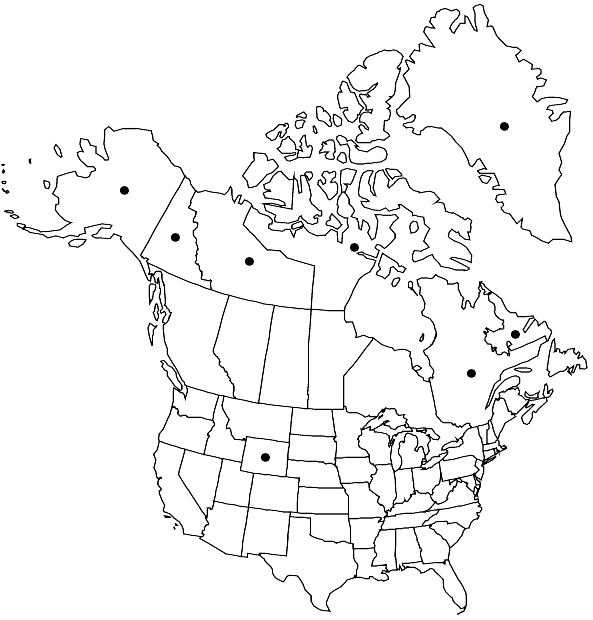Polytrichum jensenii
Meddel. Grønland 15: 444. 1897,.
Plants rather fragile, forming extensive green carpets or as scattered stems among other bryophytes. Stems 3–12 cm. Leaves (4–)6–10 mm, ± distant, not crowded; closely appressed, straight or erect-spreading and weakly flexuose when dry, erect-spreading to widely spreading or weakly recurved when moist, caducous at the base of blade; sheath short, scarcely broadened and rather weakly differentiated; marginal lamina narrow, 2–3 cells wide, erect to somewhat involute towards the apex, entire to finely and obscurely serrulate from the middle upwards, the teeth rather weak and distant; costa smooth abaxially, ending in a short, weakly toothed tip; lamellae crenulate in profile, 8–12 cells high, with paired, projecting knobs along the margins, the marginal cells in section rather narrow, retuse, thick-walled, brownish, smooth; sheath cells rather short rectangular, 60–90 × 15–22 µm; cells of the marginal lamina ± isodiametric; perichaetial leaves with sheathing bases usually hidden by upper stem leaves. Seta 1.5–4.5 cm, brownish. Capsule 2.5–3.5 mm, sharply 4–5-angled, short rectangular to cubic.
Habitat: Periodically flooded areas, bogs, sedge meadows, margins of lakes, streams and rivers
Elevation: low to moderate elevations (0–1500 m)
Distribution

Greenland, Nfld. and Labr. (Labr.), N.W.T., Nunavut, Que., Yukon, Alaska, Wyo., Arctic Europe, Asia (n Russia).
Discussion
Polytrichum jensenii is a widely distributed plant of the high Arctic, with a sporadic disjunct occurrence southward, where its distribution is poorly documented. In Nunavut, it is known from Melville Island. In arctic America it replaces P. commune north of the tree line (D. G. Long 1985, as P. commune var. diminutum), and is notable for its rather fragile texture, entire to weakly toothed leaf margins, and caducous leaf blades. The marginal cells of the lamellae are similar to those of P. commune. Forms of P. swartzii have entire or nearly entire, caducous leaves, but the marginal cells of the lamellae are rounded quadrate and thin-walled, absent the distinctive, thickened knobs of P. jensenii and P. commune. Genetic evidence may support the recognition of P. jensenii as a distinct species (G. S. Derda and R. Wyatt 1999).
Selected References
None.